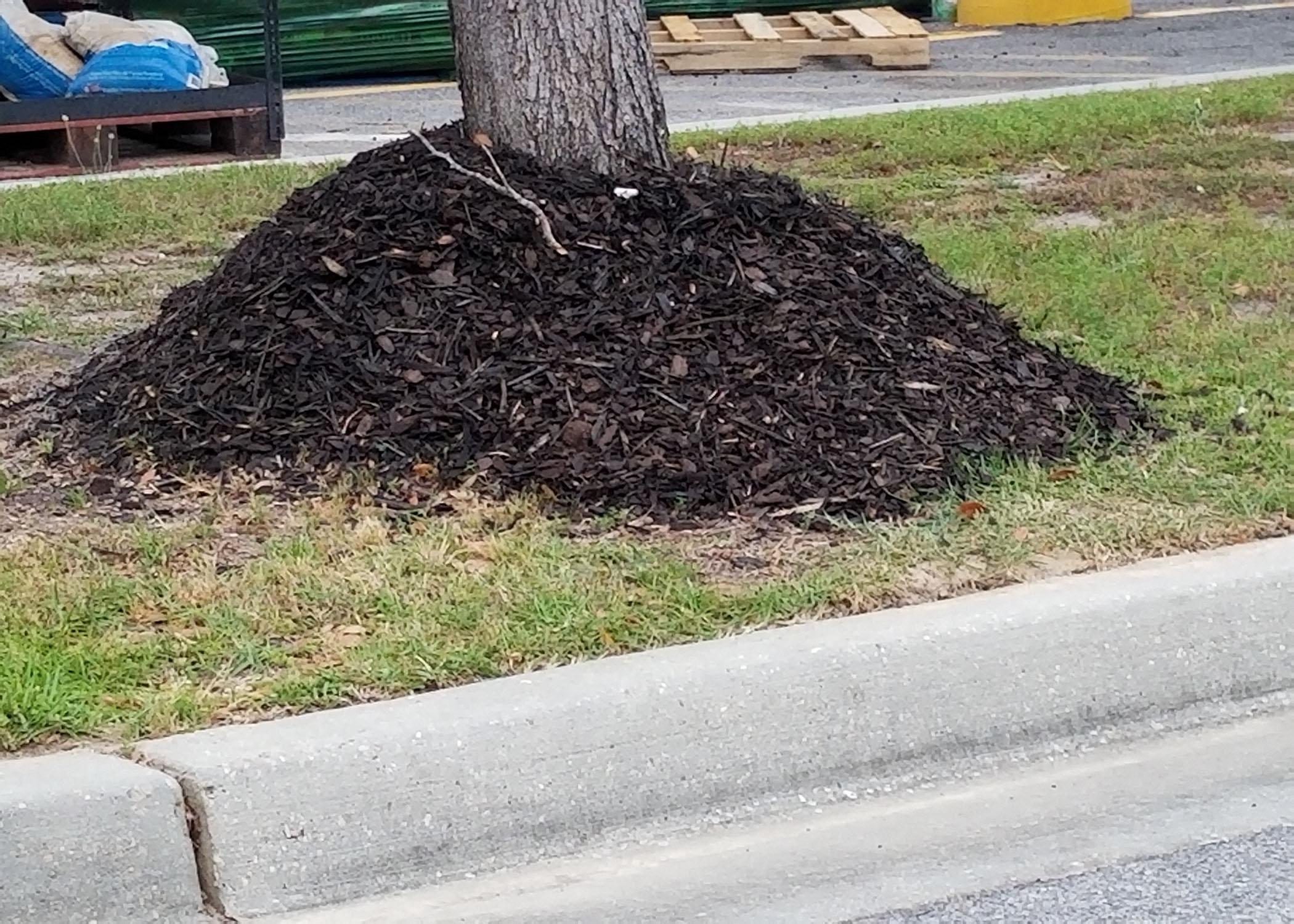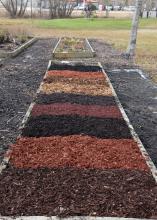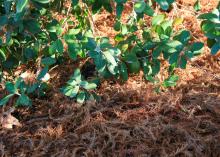Information Possibly Outdated
The information presented on this page was originally released on March 8, 2021. It may not be outdated, but please search our site for more current information. If you plan to quote or reference this information in a publication, please check with the Extension specialist or author before proceeding.
Nothing good comes from mulch volcanoes
The glorious gardening weekend we just enjoyed was certainly welcome after the recent cold weather that kept us out of the landscape.
I took advantage of the perfect weather and started on garden chores I’ve been putting off. My main accomplishment, which has been on my list for a while, was putting down fresh layers of mulch. It felt good because I have been accumulating bags of mulch, and the neatly stacked pile was pretty big.
When I finished, it reminded me that putting out fresh layers of mulch in the garden and landscape is roughly the equivalent of applying a fresh coat of paint in the house. Like paint, there’s a variety of mulch colors available. It is an easy way to make the landscape look great.
I noticed that other gardeners had the same idea, and why not? The big home improvement stores have had bagged mulch on sale the last couple of weeks. It seems others had stocked up, waiting for that first nice weekend. But I also noticed that some folks had gotten a little overzealous in their mulching habits. Not all mulching is the same.
Over-mulching of landscape trees is perhaps the most visual instance of overfertilizing, creating what are commonly called “mulch volcanoes.” When a thick layer of mulch is spread around the trunk of a tree, many things can happen, and they’re all bad.
TV gardening shows, landscape professionals, and newspaper and gardening magazine articles tell us perhaps the best thing we can do for our trees is a layer of mulch around the base. Mulching reduces weeds, cools the soil and, most importantly, conserves precious water in the tree’s root zone.
The depth of the mulch layer depends on the plant. Annual bedding plants need only 1 to 2 inches. Woody shrubs and roses are longer term plantings and benefit from 2 to 3 inches. Trees like a thicker layer in the 3- to 4-inch range.
Most gardeners love their trees and shrubs and want to do what they can to help them grow and prosper. But you can kill your trees and shrubs with kindness. There are gardeners who think if 2 to 3 inches are good, then 6 to 10 must be great. Please don’t do that!
A good rule to remember is to always go out with mulch, not up. In other words, spread mulch horizontally and don’t pile it up against the trunk. Use a rake or pull the mulch back away from the trunk by hand. As the mulch is pulled back, contour it to resemble a bowl. This configuration helps collect water and direct it towards the root system of the tree during rain or irrigation.
Proper mulching provides so many great benefits to our landscape planting:
- Helps maintain soil temperatures, warmer in the winter and cooler in the summer;
- Reduces weed seed germination;
- Reduces soil compaction; and
- Adds aesthetic beauty to your landscape beds.
Watch our Southern Gardening TV segment “CSI Horticulture Unit” for more mulching tips. For more information on types of mulch, read the Mississippi State University Extension publication “Mulches for the Landscape."










